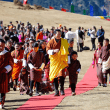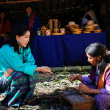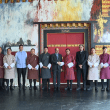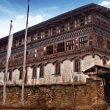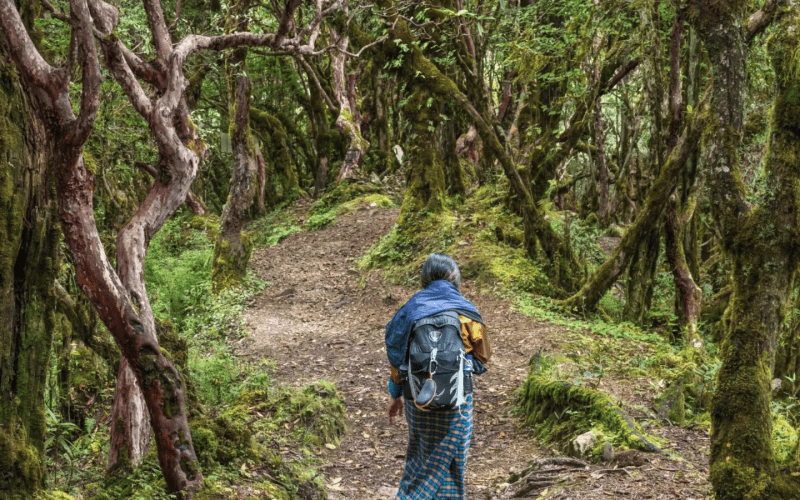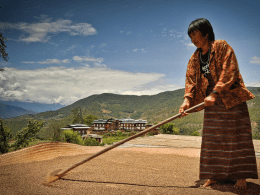In Bhutan, every forest trail, valley, and mountaintop feels alive. Here, wildlife is not tucked away in distant reserves—it shares the landscape with villages, rivers, and terraced fields, creating a living tapestry of biodiversity. From the graceful black-necked cranes that glide across the winter sky to the stealthy snow leopards roaming alpine ridges, encounters with Bhutanese fauna are both thrilling and deeply humbling. Traveling here is a chance to witness nature in its purest form, where conservation and culture are inseparable, and every step into the wild tells a story of balance and coexistence.
A commitment to conservation is at the heart of Bhutanese life. More than half of the country’s landmass is under protection, comprising national parks, wildlife sanctuaries, and biological corridors that connect habitats from subtropical forests to alpine meadows. This dedication has allowed populations of rare and endangered species to flourish in ways that are increasingly rare in other parts of Asia. For travelers, it means every trek, drive, or guided excursion can become a memorable encounter with creatures found nowhere else.
Among Bhutan’s most celebrated wildlife visitors are the black-necked cranes, which migrate from the Tibetan plateau to the Phobjikha Valley each winter. Here, in a sweeping glacial valley dotted with traditional villages, travelers can observe these elegant birds landing in rice paddies at dusk. Local communities have long coexisted with the cranes, treating them as sacred messengers, and eco-friendly visitor protocols ensure that human presence does not disturb their routines. Seasonal festivals, such as the Crane Festival in November, celebrate these migratory visitors while providing ethical, educational experiences for tourists.
For those seeking adventure at higher elevations, the elusive snow leopard represents the pinnacle of Bhutanese wildlife encounters. These solitary, ghost-like predators inhabit the rugged, remote areas of Jigme Dorji and Bumdeling National Parks. Guided treks with experienced naturalists and trackers allow travelers to explore these landscapes responsibly, offering the chance to glimpse paw prints, scratch marks, or, for the fortunate, the animal itself. Photography and observation are encouraged over direct interaction, ensuring that the species remains undisturbed in its harsh mountain habitat.
Bhutan is also home to rare mammals like the red panda, takin, Himalayan serow, and clouded leopard, alongside an astonishing diversity of bird species and vibrant flora. Protected areas such as Royal Manas National Park, Jigme Singye Wangchuck National Park, and Bumthang’s Kholongchu Valley showcase subtropical jungles, temperate forests, and highland meadows, each providing refuge for wildlife while offering travelers immersive nature experiences. Local guides emphasize ethical practices: maintaining safe distances, avoiding loud noises, and leaving no trace—principles that preserve both the environment and the magic of encountering untamed animals.
Flora in Bhutan is equally remarkable. Rhododendron forests bloom in riotous color each spring, while medicinal plants, orchids, and alpine flowers thrive in secluded valleys. Trekking through these landscapes, travelers experience the delicate interplay between plant and animal life that sustains Bhutan’s ecosystems. Conservation education is often embedded into these journeys, deepening travelers’ understanding of why preserving forests, rivers, and grasslands is essential for both wildlife and human communities.
Ethical wildlife tourism in Bhutan is more than observation—it is a philosophy of coexistence. Lodges and campsites are designed to minimize ecological footprints, often using solar energy, rainwater systems, and locally sourced materials. By hiring local guides, visitors not only benefit from indigenous knowledge but also contribute directly to the protection and stewardship of wildlife habitats. In essence, Bhutanese wildlife tourism is a partnership between visitor and environment, where every encounter reinforces respect, understanding, and responsibility.
Travelers leave Bhutan not just with photographs and memories, but with a profound sense of awe for how life, culture, and nature can coexist. Seeing a snow leopard’s paw print in the snow, watching black-necked cranes circle the sky, or glimpsing a red panda amidst moss-covered trees is an experience that transcends ordinary sightseeing. In Bhutan, wildlife is not a backdrop—it is a vital, celebrated part of the kingdom’s identity.
For those seeking a journey that nourishes the soul as much as it excites the senses, Bhutan offers encounters with wildlife that are intimate, responsible, and unforgettable. Here, the wild is preserved not for spectacle alone, but as a living testament to the country’s unwavering dedication to balance—between humans and nature, tradition and progress, curiosity and care.
